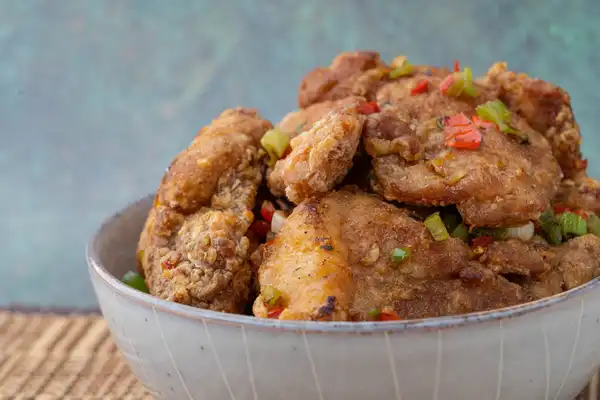Should pork chops make it to the chopping block?
My parents get asked a lot about what specific cuts are best for this dish. they usually answer that pork chops are fine.
Different parts of the pig have different kinds of pork chop. We prefer to use Pork Loin Sirloin Chop. In Chinese, it's called 里脊肉伴腰肉塊. This piece is the part of the pig's back that is close to the back legs.
My mom explains that you could cook pork chops with or without bones. But for family cooking, getting a pork chop without bones is easier, because cutting thinly is hard to do with a bone.
Oil, Yeah!
The reason we’re using corn oil here instead of something like olive oil is because olive oil has what is called a lower smoke point which is the temperature at which the oil stops shimmering or rippling and starts smoking or burning.
Smoking oil isn't always a problem and is sometimes even desired for getting that perfect “Wok Hei” in your stir fry but it's a sign that the oil is breaking down which can release burnt or bitter flavors or even harmful free radicals.
There are a few other factors that go into selecting oils like whether they're neutral or flavored or refined or unrefined. Most cooking oil is created by extracting and compressing seeds and nuts and oils that are “unrefined”, “raw”, or “virgin” are usually bottled almost immediately. They generally have more nutrients but a lower smoke point and shorter shelf life.
Refined oils go through more processing for a higher smoke point, longer shelf life, and a more neutral flavor. For simplicity's sake, for frying, you generally want to use neutral, refined oils, like vegetable oil, refined olive oil, or corn oil.
On White Pepper
If you've never heard of white pepper, it's a spice that's ground up from white peppercorns.
Fun fact: black and white pepper actually both come from a fruit. The same fruit, to be exact. White peppercorns, black peppercorns, green peppercorns, red peppercorns. These are all the same berry from the same pepper plant, piper nigrum.
The main difference is when and how they’re harvested and processed.
Black peppercorns are dried as soon as they’re picked and their skin becomes black and shriveled.
White peppercorns are soaked for at least a week which allows the outer skin to decompose. This leaves just the seed to be dried with its distinctive heat and concentrated spiciness.
As you’ll see in my dad’s recipe, even just a 1/4 teaspoon of white pepper in the seasoning is enough for a flavorful and spicy kick of heat.



